Winter Light Festival was opened last night with Marcos Zotes light installations. Zotes took one of Reykjavík City‘s best known landmark, Hallgrímskirkja church, and transformed it into a mesmerising visual experience.
Nikon D90, Sigma 30mm
Winter Light Festival was opened last night with Marcos Zotes light installations. Zotes took one of Reykjavík City‘s best known landmark, Hallgrímskirkja church, and transformed it into a mesmerising visual experience.
Nikon D90, Sigma 30mm
Despite the cold and the snow the Common Crossbill has started wooing. In South Iceland they start breeding in February and the chicks hatch in March.
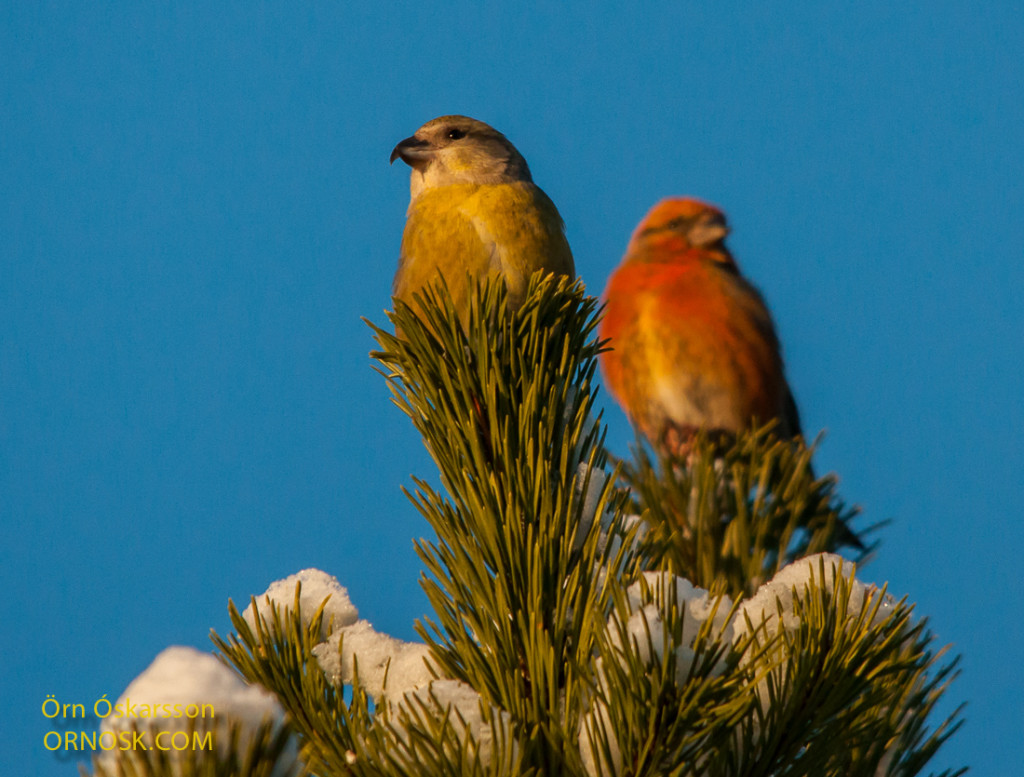
The Common Crossbills are nothing less than spectacular when they sit in the top of a spruce or pine tree . Their colours match beautifully with the green of the treees, the snow and the blue sky.
The photo of this pair was taken February 2, in Grímsnes, South Iceland.
This Redwing is all puffed up in the cold. I bet it’s dreaming of warmer weather and the coming of spring, at least we are. This winter has been one of the worst we remember. Endless blizzards week after week and snow that probably won’t melt until April.

One of the perks is of course all the birds that frequent our garden, lots of Redpolls, Snow Buntings, Starlings, Crossbills, Thrushes and vagrants such as the Chaffinches. They know for sure that here they will get enough food.
There is no denying that winter is the most beautiful season of all,
–at least some of the time 🙂
A full moon occurs every 28 – 30 days.
Full Moon on February 2, 2015. Nikon D90 + Nikkor 14-24mm
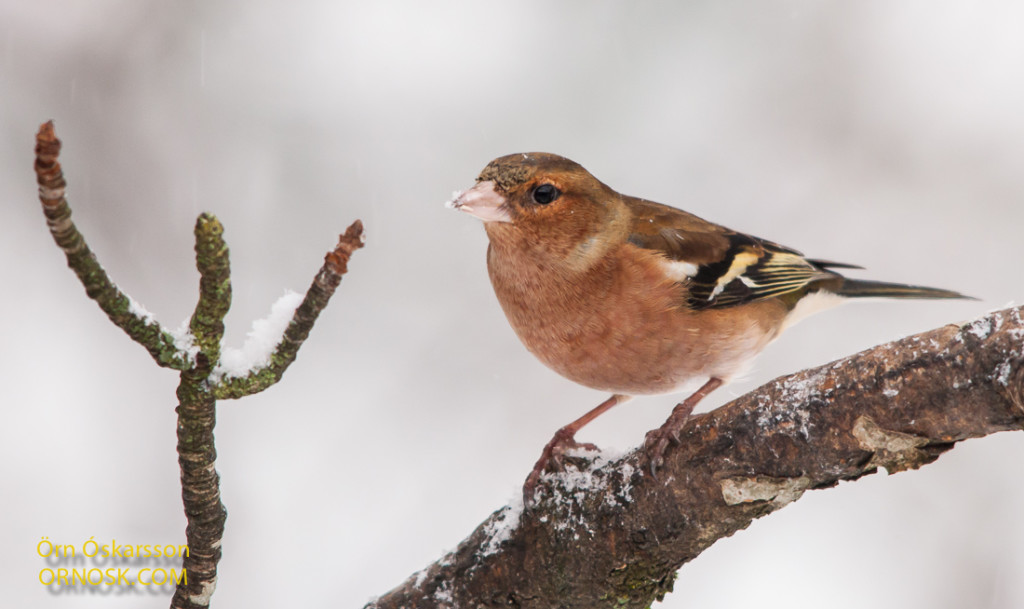
The Chaffinch is a vagrant in Iceland and here in the Selfoss area they had not been seen since 1980. This winter there have been four to five birds in the garden most weeks since October. They have come and gone for a couple of days always returning. These photoes were taken yesterday.
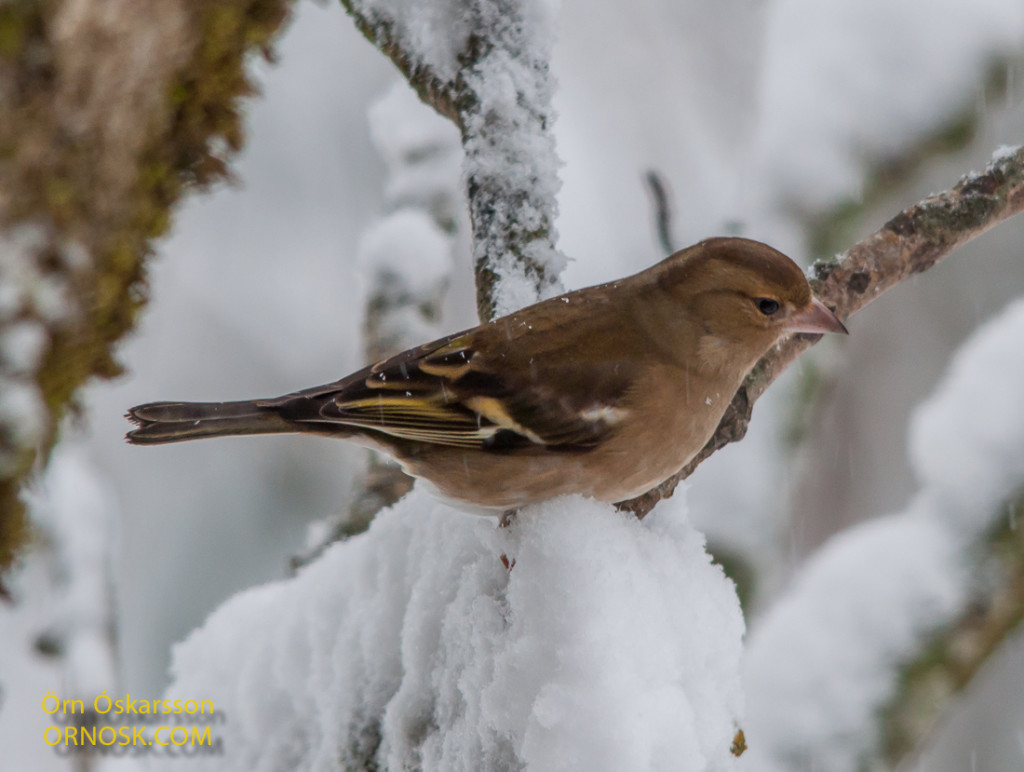
In the beginning of November we had three types of Finches, a Brambling and a Siskin, but the Chaffinches are the only ones that have stayed up until now. We can not help wondering why they are here this winter?
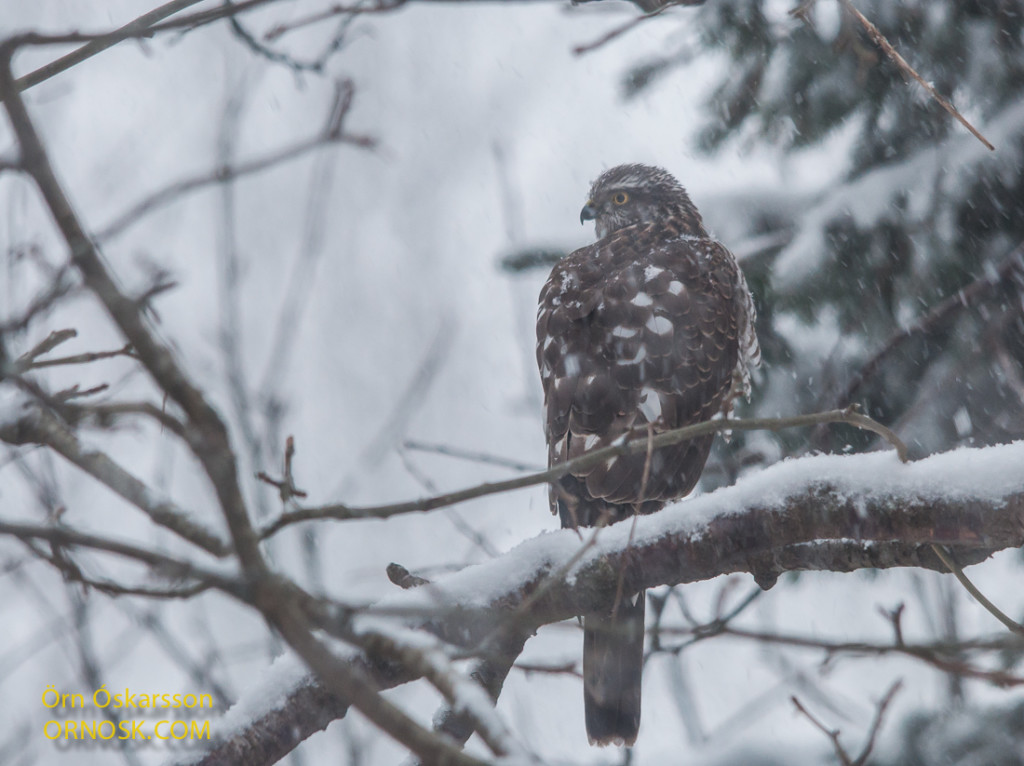
At last I managed to catch a photo of the Sparrowhawk that has been lurking in the garden since the autumn. This beautiful bird is quite shy so photographing it has not been easy. Today it sat still for half a minute until it noticed me. The photo is not so bad considering the heavy snowfall and the soiled window panes.
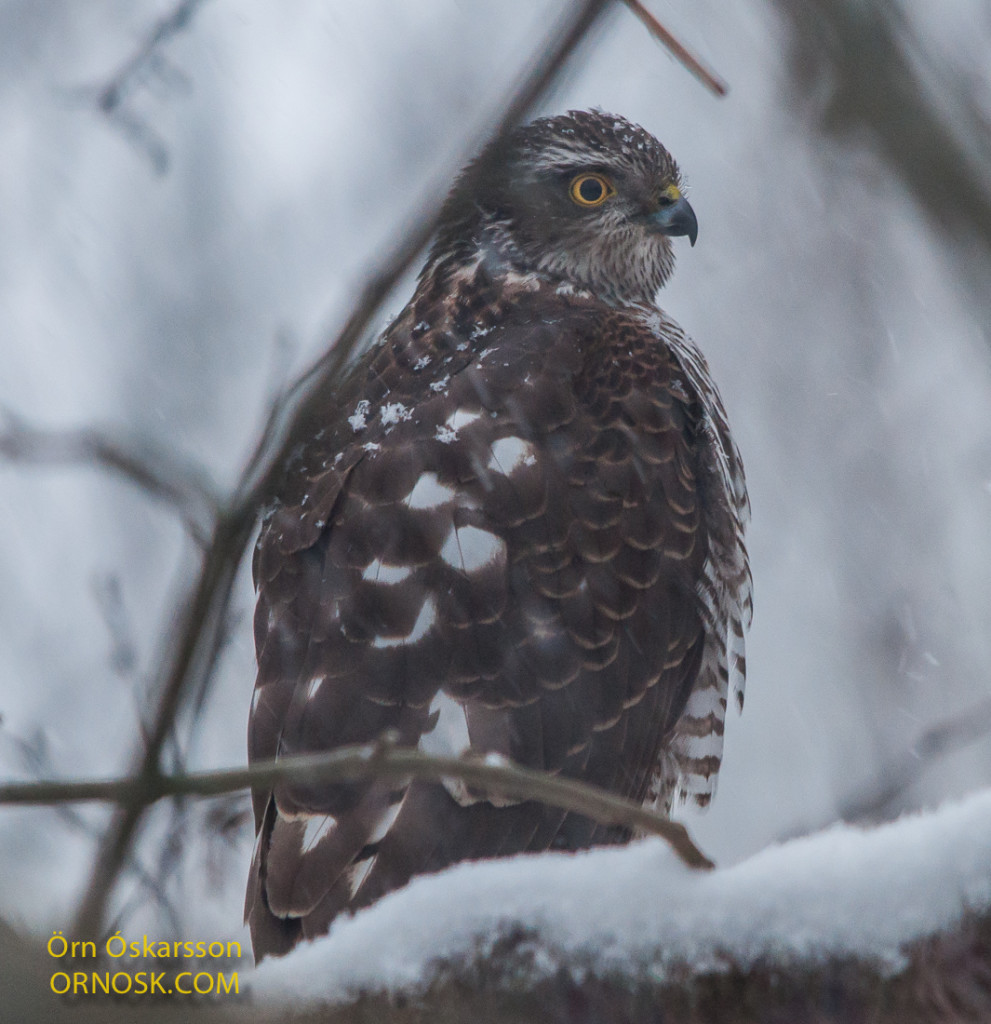
This is probably a young female. The Sparrowhawk is a vagrant in Iceland and has probably come here from Scandinavia.
In the past few weeks three Merlins have been daily guests in the garden. We have also had a Sparrowhawk visiting occasionally. All these birds of prey have caused havoc in the garden and sometimes the smaller birds stay away for several hours.
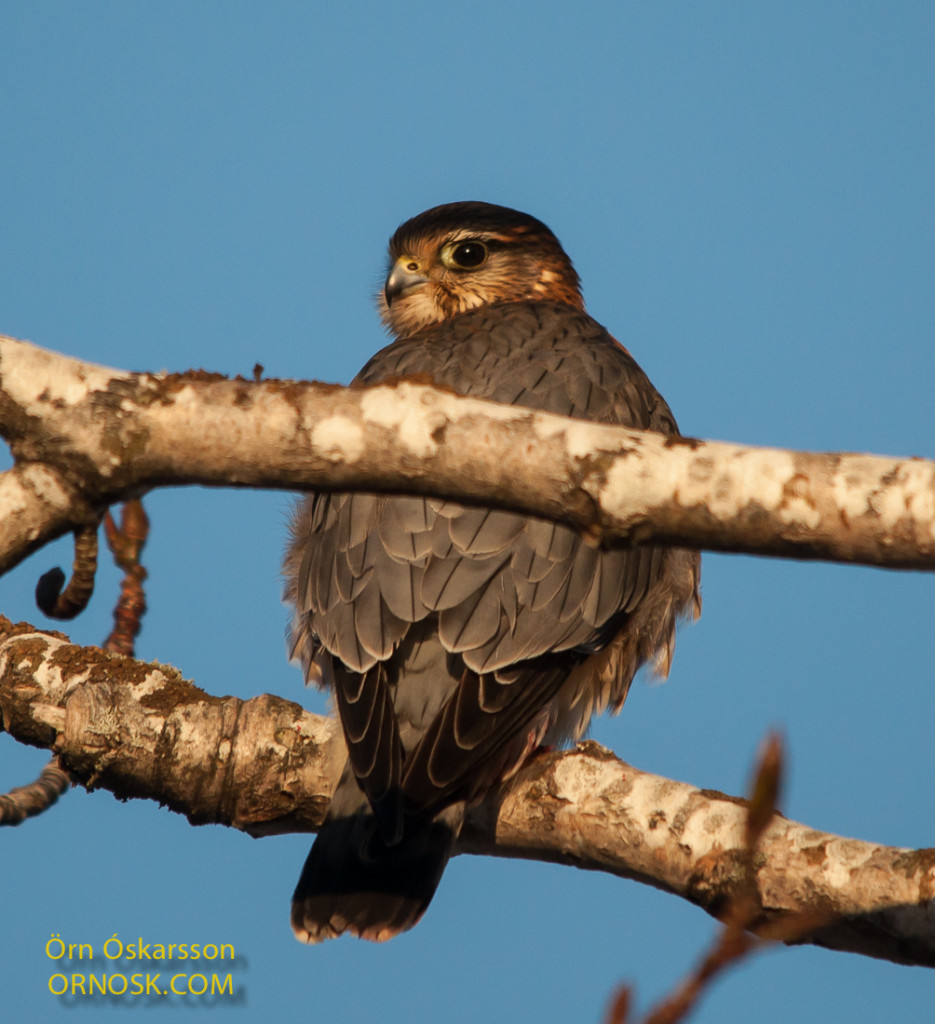
This male Merlin posed for the camera today after having dined on a Redpoll.
Only two Yellow-Bellied Sapsuckers have been seen in Iceland, the first one was found dead.
– In 2007 a Yellow-Bellied Sapsucker (Sphyrapicus varius) was spotted in a garden in Selfoss. This was only the second time that this species was seen in Iceland. The bird stayed in the garden from October 7 – 13, most of the time in the same birch tree.

The Yellow-Bellied Sapsucker is a breeding bird in North America and has only been seen in the Western Palearctic five times and in Iceland only two times. The first bird was found dead in the South East of the country in 1961.
– It goes without saying that a lot of birders visited Selfoss to see this very rare vagrant.